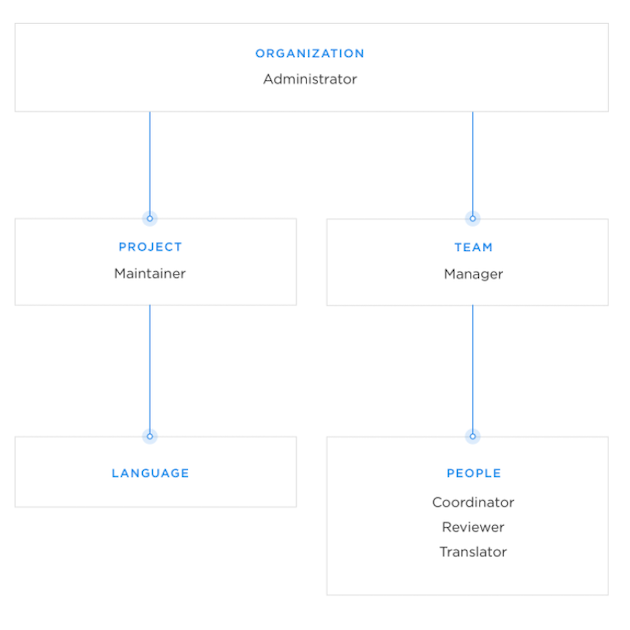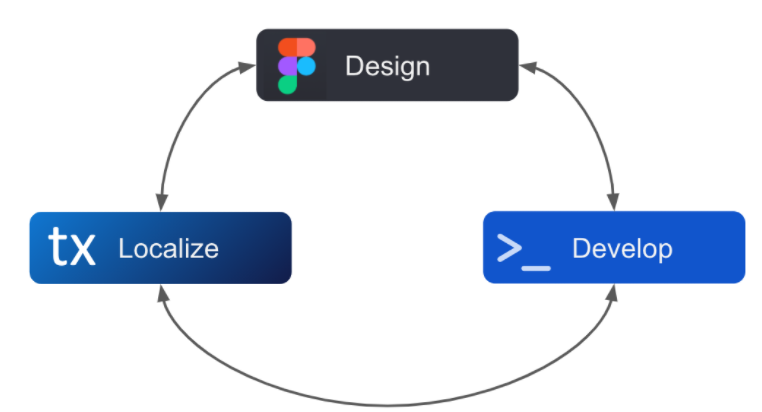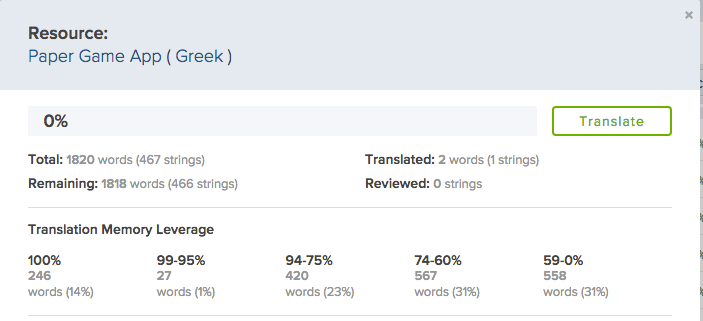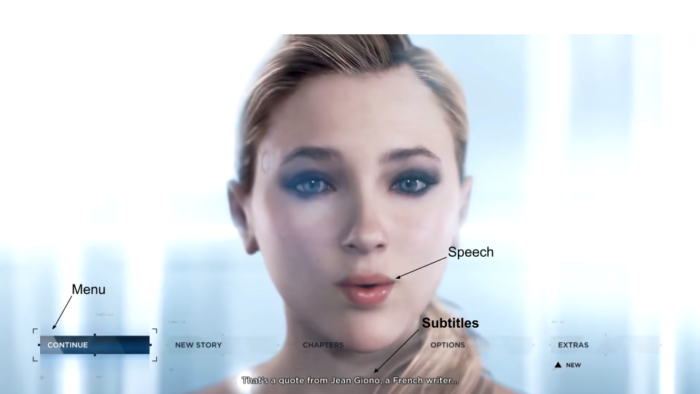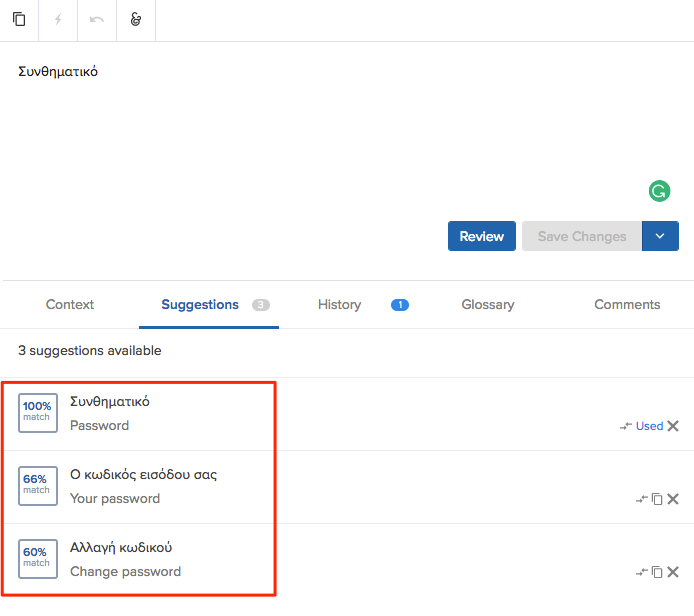Updated on March 2024
What is localization? And what about Translation Management Systems? Or software localization, AI localization, globalization, internationalization, etc.
We are talking about an industry with tons of complicated questions and not a whole lot of answers. Developing a strong localization strategy is crucial to navigate these complexities and ensure successful market entry. So, let us clarify things a little.
Here is what localization is all about!
What is Localization?
Simply put, the very definition of localization (l10n) is when you take a piece of content in its original form and then convert it into something more suitable for another country, target audience, or city. It is all about making your content accessible and appealing to locals.
But you should take care not to confuse translation with localization. Because, after all, translating content is but a small part of localization.
To be more precise, having to localize a piece of content will most likely require you to focus on:
- Translating
- Tone of content
- Media
- Currency
- Units of measurement
- Cultural nuances
A crucial part of localization focuses on adapting your original message so it resonates with a specific target audience by using their native language and cultural references. For example, the waving gesture that some regions use in their culture as a greeting is actually considered offensive by Greeks, aka, kind of like showing someone the middle finger.
This means that part of localizing your content for Greece is, at the very least, making sure that you are not accidentally offending a specific audience. And, of course, the same applies to all other countries, too.
A simple translation, on the other hand, only aims to correctly translate the content to a specific target language.
Needless to say an enormous part of localization is still translation, though.
Different Roles in Localization
Localization is a team effort where multiple professionals need to pitch in to get things done.
The exact number of employees and their roles may differ across organizations. But these are the typical roles on a localization team:
- Administrators
- Project Maintainers
- Team Managers
- Language Coordinators
- Reviewers
- Translators
Language coordinators play a vital role in finding qualified translators with expertise in the target market and cultural background. And, of course, you also have engineers who need to handle the code before, in between, and after the localization process. Unless you are using software such as Transifex Native or Transifex Live. Tools such as these help you minimize the workload for both engineers and the localization team.
Speaking of which, even our base platform offers native support for each of the aforementioned localization roles. You can assign different roles to different people, depending on their responsibilities, and that adjusts their level of access to a project.
Refer to either this page or the bottom sections of this article for more information.
The Traditional Localization Process
The localization process involves adapting content for different target markets, ensuring cultural appropriateness and linguistic accuracy. This is typically how localization has been carried out in the past:
- Send the source language documents to your translators
- Track the overall progress by regularly checking on translators
- Send the completed translations back to reviewers for quality assurance
- Have the marketing team make further improvements for the best results
- Send the notes back to the translators for them to make the necessary corrections
- And once everything is ready content-wise, engineers step in to get that content live on a website, app, book, or whatever your product may be
This is a simplified explanation that barely showcases the complexity of localization. Not to mention that things get so much tougher if you take into account how much content has changed over the past decade with apps and even games.
That’s where Translation Management Systems (TMS) come in!
What is a Translation Management System?
A Translation Management System is a platform that you can use to localize your content and product more easily and quickly while also cutting down on costs.
The process is so simple that we can describe it in 3 steps:
- Upload your content
- Invite your collaborators over (Translators, managers, project maintainers, etc.)
- And start localizing
It’s a way of bringing everyone and everything under a single place so that you can easily manage your localization project. And thanks to that, you’ll no longer have to waste time sending documents back and forth between teams or wasting time trying to track your progress.
Furthermore, a good TMS also offers plenty of tools for continuous localization or even for automating it up to a certain point.
What is Continuous Localization?
Once upon a time, all you had to do was create content, translate it, and release it. The problem with this workflow now is that a lot of content is ever-changing. So, if you are trying to solve modern problems with traditional solutions, that’s hardly ever going to end well – which is where continuous localization comes in to save the day by providing a detailed roadmap for how the localization process will unfold every time you create new content.
See, if you are localizing a SaaS application the old-fashioned way, there is no option but to tediously go back and do the same thing time and time again. Download the latest files, edit them, adjust the code accordingly, and upload them again.
Continuous localization, on the other hand, gives you the option of, well, continuously localizing. It’s all about having a platform that is as agile as your product.
Some examples of ever-changing content are:
- SaaS applications
- Legal documents
- Marketing material
- Product how-to guides/documentation
- And more
Transifex, as an AI-powered localization hub, offers plenty of solutions for achieving the ideal continuous localization workflow. Transifex Native, in particular, is the most agile and seamless option in the market.
Feel free to refer to the last sections of this article for more information about that.
What is Automation in Localization?
Automating anything as complicated as localization may seem like an impossible task. However, that’s hardly the case.
Sure, you can’t just press a button and expect a machine to handle everything for you automatically. But our automation tools are still a great way to get rid of repetitive tasks, partly or fully.
For example, Translation Memory (TM) software can automatically detect phrases that are identical or similar to what actual humans have already translated. And once you have a database of accurate translations, you can automatically fill up hundreds or, in some cases, even thousands of words.
It’s not just about translating content, though. There are plenty of other robust tools in our arsenal that you can use to automate:
- Integration with other platforms (Slack, GitHub, Figma, Contentful etc.)
- Uploading and downloading translations
- Seamless updates
And don’t forget about Machine Translation and Transifex AI, which can automatically complete a translation without any human interaction. However, the only downside is that it’s nowhere near as accurate as Translation Memory.
More about software tools and the automation process later.
The Importance of Localization in Business Strategy
Localizing your content can help you reach more people around the world. And, thus, despite all of the imminent challenges that it brings with it, localization is an excellent way of increasing revenue.
Not to mention that if you do things right, you can get:
- Better Return on Investment (ROI)
- Better SEO rankings due to offering content and services in more regions
- Increased brand loyalty through enhanced user experience
- Lower translation costs thanks to our automation tools
- Shorter turnaround times due to our TMS’s increasing efficiency
- And more
Don’t take our word for it. Take a look at our case studies and see real success stories of how numerous companies brought their business to the next level!
Furthermore, research shows that 76% of people prefer to buy products in their own language, and 40% will never buy from websites in other languages. By localizing your content, you can effectively reach new audiences in different international markets, increasing brand awareness and customer base. Not to mention that offering localized customer support is essential for building trust and fostering long-term relationships with customers in new markets.
HubSpot, MSI, BEEKEEPER, Space Ape, Trello, Deezer, and hundreds of other companies are using our services to reach more people and get more business opportunities, too. So many people can’t possibly be wrong.
Translation and Interpretation
Localization is a process that comes with tons of actions that you must perform and, thus, tons of terms that you have to know about as well—internationalization, globalization, translation, interpretation, etc.
Since many of you seem to wonder about the difference between the last two, let us focus on translation and interpretation, for now.
Translation VS Interpretation
First, let us clarify that interpretation is not something that you are generally going to see in localization.
That’s primarily due to the fact that interpretation is meant to be done quickly. It’s basically a simple translation that you typically do on the fly, usually verbally.
While translating, on the other hand, you ideally want to take every piece of context into account. Your goal is to reproduce the original content in another language as accurately as possible – even if that requires many revisions.
So, in simple terms:
- Interpretation: Translating as quickly as possible, usually verbally, with quality being a second-rate concern
- Translation: Takes more context into account and aims to reproduce the source content as accurately as possible
One thing to keep in mind is that when we are referring to localization, the end translation may slightly differ from the source content. After all, localization is all about tailoring content and meaning to a specific locale.
Sometimes, you just have to reproduce the original content differently from the original. So, that’s where the line between old-school translation and localization can get a bit blurry.
Internationalization and Globalization
You may be thinking that Internationalization and Globalization are the same thing. After all, “global” and “international” do carry the same meaning.
However, in the business world, these two terms share little to no similarities. Here is roughly all you need to know about them!
What is Internationalization?
Internationalization (i18n) is everything that you have to adjust in terms of software and design to prepare your website or app for a global launch.
For example, the same words and sentences in different languages may have different lengths. If you don’t adjust the design of your website accordingly, some translations may end up breaking it.
So, in that case, a part of internationalization is having your engineers make sure that the localization team can use various sentence lengths without breaking the website’s design.
Speaking of which, do keep in mind that you can use our editor’s built-in string description tool for such things. It’s useful for keeping your team updated in terms of how many characters they can insert on a translation or maybe even giving them visual context to give them a better understanding of what they are translating.
That’s all you need to know about Internationalization on the surface level. If you are an engineer or a localization manager and you want to know more about it, feel free to check out this page.
What is Globalization?
Globalization (g11n), much like Internationalization, is all about making your content and product globally available. The difference is that now we are talking about the content and/product themselves rather than the engineering behind them.
Think about companies that are truly operating on a global scale, for example, such as eCommerce platforms, streaming services, and social media platforms. We are referring to platforms such as Amazon, eBay, Facebook, Twitter, Netflix, etc.
Globalization includes, but is not limited to:
- Translating content
- Customizing it for individual regions (Which is basically localization)
- Adjusting media to suit different regions better
- Following the necessary processes of reaching a different market (Legal, economic, real-estate management, equipment, etc)
- And more, depending on what you are trying to make globally available
Despite all the challenges of localizing and globalization, these companies are doing their best to reach as much of the world as possible. Thanks to that, they are making higher revenue, more customers get what they want, and more work opportunities around the world are opened.
It’s a win-win situation for everyone.
Different Types of Localization
Localization is not just about translating websites and digital content. In this modern age, we are dealing with all sorts of complicated platforms: apps, games, web apps, and more. Specific market localization requires tailoring content to the cultural norms and preferences of a particular region.
Here are some examples of what you can localize by using Transifex.
App Localization
As the name suggests, app localization is when you localize the content of an app. It’s all about adapting it to be as friendly as possible to local communities.
Just up until a decade ago or so, apps were mainly nothing but a gimmick. And now, most people can’t imagine living without them. That is why we take app localization seriously, and we suggest you do, too.
In this case, using a tool that’s explicitly made for seamless, continuous app localization, such as TX Native, is going to make a massive difference in your workflow.
Web App Localization
Web apps are basically apps that run on a server. The aim of localizing a web app is the same as when you localize any other product or piece of content. All you have to do is make its translations more suitable for certain locales.
Transifex is an excellent example of a web app since it’s technically an app, but you don’t have to install it.
The thing is that web apps need to be treated more like actual apps instead of websites – which is where you may once again be able to leverage something such as TX Native.
Website Localization
Website localization is the process of adapting a website to a locale; plain and simple.
The internet user base is booming, with 97 million new users joining last year alone. With so many new people coming online all over the world, website localization is a must-have for businesses that want to reach them. The great thing about localizing websites is that you don’t necessarily have to deal with the old-fashioned way of downloading and uploading files. Instead, you can leverage continuous localization tools like Transifex Live, which streamlines the process.
Localizing websites with tools like Transifex Live has both advantages and disadvantages. For example, while you are getting a lot more visual context and you don’t have to bother with files, you are also not able to interact with most of our tools while using the plugin.
If you want to learn more about TX Live or TX Native, feel free to refer to the links above or at the bottom sections of the blogpost.
One last thing to keep in mind about website localization is international SEO. See, localizing a page for another region is not enough for it to rank in that region, even if you are ranking with it in the US.
You’ll have to take some additional steps to “show” search engines what’s going on. ‘Cause on their own, they can’t understand that your “duplicated” page is actually a translation that’s targeted toward a specific region.
More about international SEO in this guide.
Mobile App Localization
Mobile app localization is basically the same as app localization, except we are strictly referring to the mobile versions of the app.
With more than 4.93 billion app users worldwide, leaving mobile app localization out of the equation is a bad idea.
The tricky thing about app localization is that you often have multiple variants of the exact same app in different operating systems. Think of Windows, Android, iOS, macOS, etc.
So, due to that, you may often find yourself translating the same content time and time again. Now that’s a problematic workflow. And to the massive surprise of, well, nobody, we happen to have a partial solution for this, too.
Using something like Translation Memory can help you automatically complete translations that you’ve already done in one app and platform. When the time comes to translate the same app on another platform, TM should fill up the work you’ve already done.
Game Localization
Video game localization is possibly the biggest challenge. You basically have to localize:
- An app
- A book
- Videos/dialogues
- Website-like interfaces
- And sometimes more, depending on the nature of the game
But, at least, unlike websites and apps, most games are not ever-changing. Continuous localization isn’t as big of a deal. Unless we are talking about a multiplayer title that refuses to die, such as CS: GO.
Nevertheless, you are going to be needing lots of visual context and all the tools that you can get. A Translation Management System such as Transifex can genuinely be a life-saver here.
Software Localization and Transifex’s Localization Tools
Translation Management Systems, as they are, have always been a very powerful tool to make localization more accessible, faster, and cheaper as well. On top of that, we also happen to have plenty of other included tools that can make everything so much better.
Here are some of the most noteworthy ones!
Automation Tools
Translation Memory
Translation Memory (TM) is a database that continually stores all of your translations. And when it detects that you have an identical translation that has already been done elsewhere, it automatically fills that translation up for you.
This is useful for saving tons of time and, in many cases, even money. After all, getting translations done automatically means that the translators end up working on fewer phrases for a smaller amount of time. And that ends up costing you less in the long run.
It’s worth keeping in mind that within TM, you’ll also find plenty of other tools, such as:
- Quality Assurance
- Fill-up
- Context Matching
- Suggestions
- Leverage
- And groups
With more to come. Check out this thorough guide to learn more about it.
Don’t confuse Translation Memory with Machine Translation. The two of them have little next to nothing to do with each other.
In short, Machine Translation relies on advanced algorithms, while Translation Memory is all about working with a database of past translations.
Machine Translation
Machine Translation (MT) refers to tools such as Google Translate, DeepL, Amazon Translate, and anything similar.
Translation machines can automatically translate pretty much everything you throw at them. However, that doesn’t mean they do it well – which is why most of our customers generally prefer using Translation Memory over Machine Translation.
That is partly because Machine Translation is exceptionally complicated. Tools such as Google Translate don’t simply rely on a massive database for completing translations but on AI as well.
Transifex AI: Unleash the Next Generation of Localization Automation
Transifex AI goes beyond the limitations of traditional machine translation, offering a future-proof solution for high-quality, brand-consistent localization. Here’s what sets it apart:
- Industry-Specific Expertise: Transifex AI leverages a unique training approach informed by Transifex’s over 10 years of experience in the localization industry. This means the translation model can handle the specific contexts and terminology relevant to your field and avoid generic outputs or hallucinations.
- Contextual Understanding: Unlike generic translation tools, Transifex AI prioritizes contextual understanding. It goes beyond basic word-for-word translations and considers the surrounding text and your brand’s specific voice and style. This results in translations that feel natural and resonate with your target audience.
- Continuous Learning: Transifex AI is constantly learning and evolving. As your team provides feedback and interacts with the platform, the AI continuously improves, ensuring your localized content remains consistent and high-quality over time.
- SEO-Friendly Content: The AI integrates SEO optimization directly into the translation process, enhancing the organic reach and improving online visibility in target markets. This means your translated content is not just accurate but also optimized to drive increased traffic.
- Seamless UI Experience: With the innovative Transifex AI Shorten feature, translations are designed to fit even the most complex UI designs. This ensures that users enjoy a seamless and coherent experience, irrespective of language.
- Cost Savings: By streamlining the translation process through automation, Transifex AI substantially cuts down costs associated with other translation methods, providing a cost-effective solution for expanding your global presence.
- Scalability: Tailored for complex and evolving workflows, it ensures your content remains consistent and up-to-date across all markets, effortlessly adapting to your growing business needs.
- Data Security: With a strong commitment to confidentiality, Transifex AI upholds the highest security standards, ensuring your sensitive information remains protected throughout the localization process.
- Real-Time Localization: The AI engine facilitates real-time, personalized content localization at scale, allowing businesses to swiftly respond to market demands and significantly reduce time-to-market.
By incorporating these elements, Transifex AI empowers businesses to achieve faster turnaround times, reduce localization costs, and deliver a seamless brand experience across a global audience.
With Transifex AI, you can now experience truly automated localization like never before. Sign up to try it out for free!
Team Management & Collaboration
Team management is one of our core tools that you can use to effectively collaborate with:
- Administrators
- Project Maintainers
- Team Managers
- Language Coordinators
- Reviewers
- And Translators
Each role has different levels of access and editing permissions. But different levels of responsibility and tasks to complete as well.
Reviews and Proofreads
Even the best translators can make mistakes – which is why reviewers are essential to having an effective workflow. This is something that we take into account in Transifex, and that’s why we are offering built-in tools for reviewing and proofreading translations.
Edit Lock
Some translations are better left untouched. If you want to lock them, you’ve got the option of doing so, thanks to edit lock.
Translation Tools
Translation tools help you ensure consistency and cultural appropriateness across all your content, including text and visual elements, for different countries
Style Guide
As we’ve already mentioned, localization isn’t just about translating content. It’s also about making it more appealing for locals – which is why creating a styling guide that translators can follow will likely prove to be an enormous helping hand.
Glossary
If your industry addresses certain aspects with specific expressions, you’ll definitely want to use a built-in glossary tool. It comes in handy for defining various terms and ensuring that your translators translate using the appropriate tone for your industry.
Furthermore, you can also add Translation Checks to the mix so that translators will get either a warning or an error when they don’t follow the glossary’s instructions.
Translation Context and Visual Context
Translating is a tough job by itself, and localization does not make it any easier. Having context to work with, however, is a huge helping hand for translators. Not to mention reviewers and the rest of the team, by extension, too.
With Transifex, you can insert context in both the form of text and visual context with screenshots as well.
Translation Checks
Translation Checks are mostly there so that you can make sure that translators are properly inserting some parameters. We are talking about parameters such as:
- Ensuring that certain characters, such as dashes, are transferred over to the translation
- HTML tags
- New lines
- Numbers in the source
- URLs
And more, depending on the file type, language, and the level of control you want to establish.
You can choose between three levels of Translation Checks:
- Off: Translation Check does not do anything about that parameter
- Warning: The translator gets a warning but still has the option of saving the translation
- Error: Using this will “force” the translator to address the issue before they can save the translation
Last, but not least, do not forget that you can also add custom variables to make sure any custom logic of your application is maintained.
Video Subtitles
Translating videos is an easier task when you can see not only the timestamps for each translation but also the actual video.
And that’s something you can easily do through the video subtitles tool by enabling the “Enable video editor” under Transifex’s settings.
HTML and Variable Placeholders
Dealing with raw HTML files is not a pleasant task since you have to make sure not to touch variables and tags – which is precisely what this feature is all about. Transifex automatically inserts placeholders in the place of variable tags.
This, in turn, makes it easier to focus on what you need to translate while also preventing accidental changes.
Other Services
Translation Vendors
If you don’t have your own team of translators, feel free to reach out to one of our partnered vendors by placing an order.
Do kindly note that Transifex itself doesn’t offer any translation services. We only offer a platform that allows you to manage everything from a single place and a few translation agencies that we are cooperating with.
Crowdsourcing Mode/Community Translations
Crowdsourcing Mode allows your community to suggest translations while also voting on what they think is the best. However, do keep in mind that enabling crowdsourcing mode will remove the “reviewed” status from previously reviewed translations. And that’s not going to come back even if you later disable this feature.
Insights and Reporting
The main homepage of Transifex should give you all the info you need regarding progress with insights and reporting. We are talking about things such as the source words that you have, the number of collaborators, what these collaborators offer in terms of performance, and more.
You can also download these statistics in a CSV file to calculate how much you are going to have to pay your translators.
So, with all that out of the way, here are a couple real-life examples of how you can use a TMS to localize your content!
Web Localization With Transifex Live
Transifex is a giant leap forward compared to the old-school localization workflow. But that’s not to say that it can’t get any better. That’s why we developed Transifex Live and Transifex Native!
Think of Transifex Live as a sort of web plugin that you can install directly on your website as a sidebar. And after the initial installation, you get to localize it live as you are looking at it without having to download or upload documents.
The only downside of TX Live is that you can use it on websites but not with other documents and apps. And you also don’t get all of the other tools otherwise available on our “normal” platform.
And that’s basically how you can do web localization by using Transifex.
Software Localization With Transifex Native
We’ve already mentioned what app/software localization is. But what hasn’t been mentioned is that we have a unique tool for localizing software so much faster and efficiently than what is otherwise possible with Translation Management Systems.
When localizing with Transifex, or any other Translation Management System, for that matter, you usually have to upload and download documents while also adapting your code to them. And while that’s something that localization managers are no doubt used to, Transifex Native is here to offer a much more efficient workflow.
Transifex Native is a software localization solution that you can use to automatically push and pull content from your app. And it’s not just Over-The-Air (OTA) updates. Native is directly integrated into your code. So, in short, it makes localization easier for engineers as well as translators and localization managers.
Keep in mind you’ll have to rely on a different SDK, depending on the language and framework you are using. We have dedicated guides for JavaScript, PHP, Angular, Python, React, VUE, Android, and iOS.
That’s a great example of how software localization works on Transifex. Head over to this page if you want to learn more about it.
Wrapping Up
By understanding what localization is and implementing a well-defined strategy, businesses can successfully navigate the complexities of international markets and achieve their global expansion goals.
Check out our blog, packed with helpful articles and how-to guides, to help you craft the most effective localization process that caters to a global audience.
Start Your AI-Empowered Localization Journey
Don’t miss out on the AI revolution in localization. Sign Up for a free trial and engage the world with Transifex.


